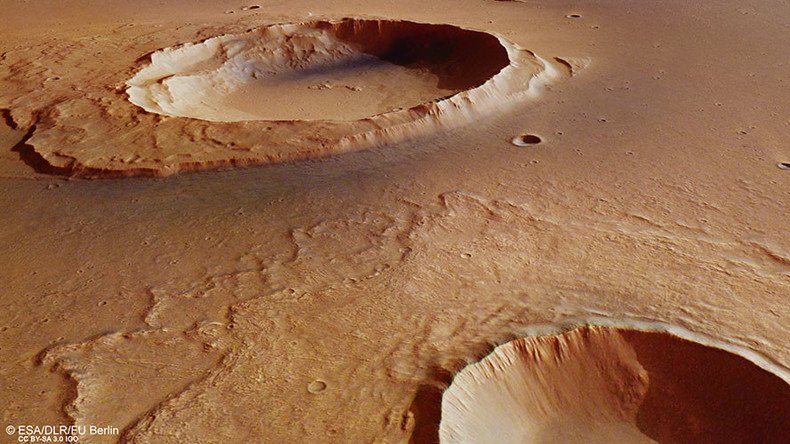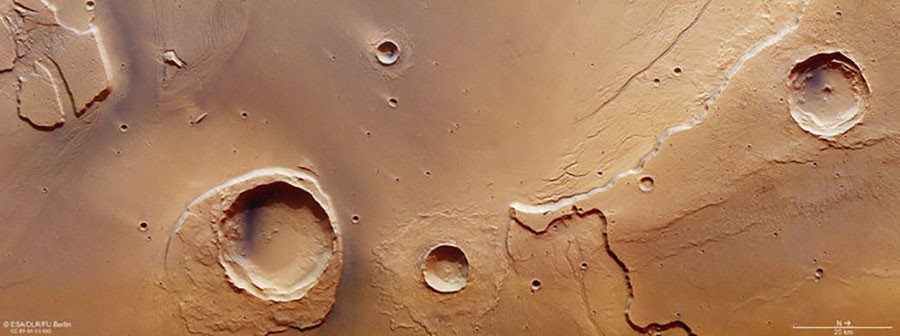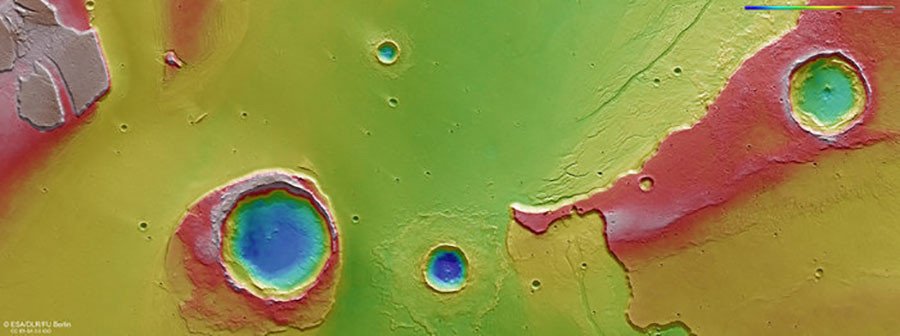Incredible high-def images show ancient flooding remnants on Mars (PHOTOS)

Remnants of a huge flood on Mars have been discovered, according to the European Space Agency, which has captured phenomenal high-definition photos of one of the largest ‘outflow channels’ on the red planet.
The ESA says a combination of volcanism, tectonics, and surface collapse and subsidence led to a “massive groundwater release” from the Echus Chasma region on Mars around 3.6 to 3.4 billion years ago.
READ MORE: Oldest-ever fossils show life existed on Earth at its infancy - study
The groundwater release subsequently flooded the Kasei Valles region, creating a channel system that extends for around 3,000 km before sinking into the vast plains of Chryse Planitia.
“These ancient mega-floods have left their mark on the features seen today,” the ESA confirmed on Thursday.

In these new high-definition images, taken by Mars Express on May 25, 2016, the mouth of Kasei Valles can be seen marked by the mega-flood billions of years ago.
Nearby a 25 km-wide impact crater, named the Worcester Crater, managed to stand up to the erosive forces of the extreme flood

Much of the debris material surrounding the crater has eroded over time while the section downstream of the flood remained intact under the protective walls of Worcester.
READ MORE: Collapsing Mars moons could form rings, research claims
Meanwhile, the debris surrounding another smaller crater close by is undisturbed, suggesting that this impact was made after the flooding. A splash-like pattern of the debris ejected from the crater provides further evidence that this impact occurred while water covered the surface.












